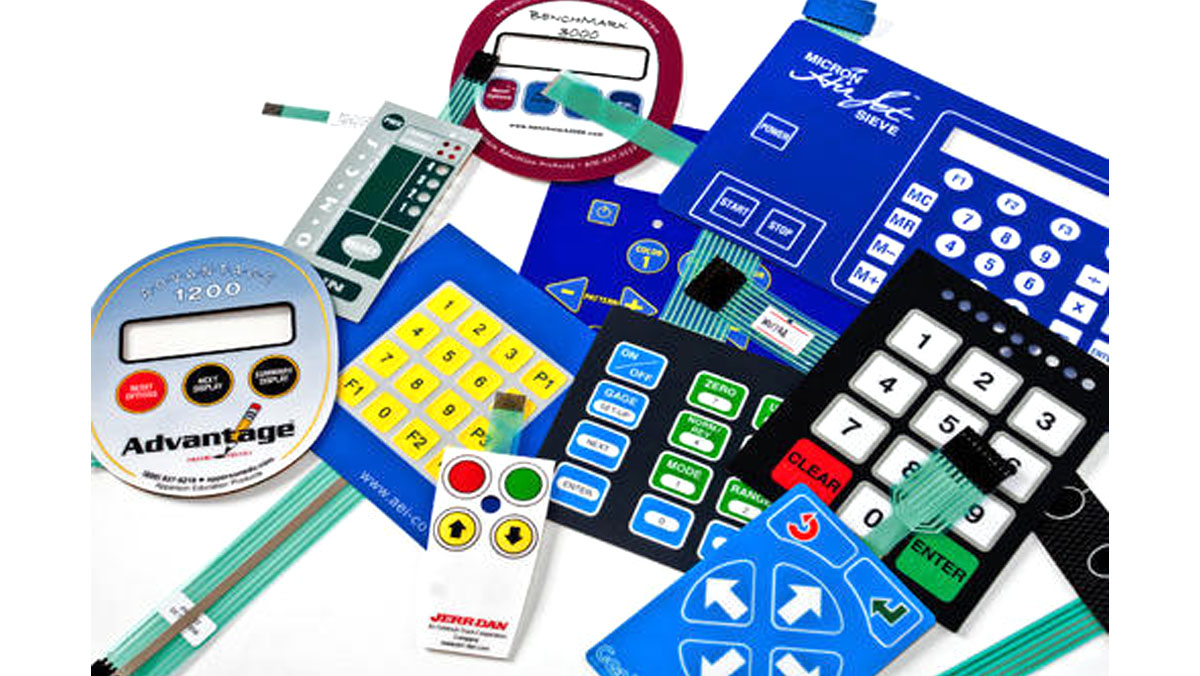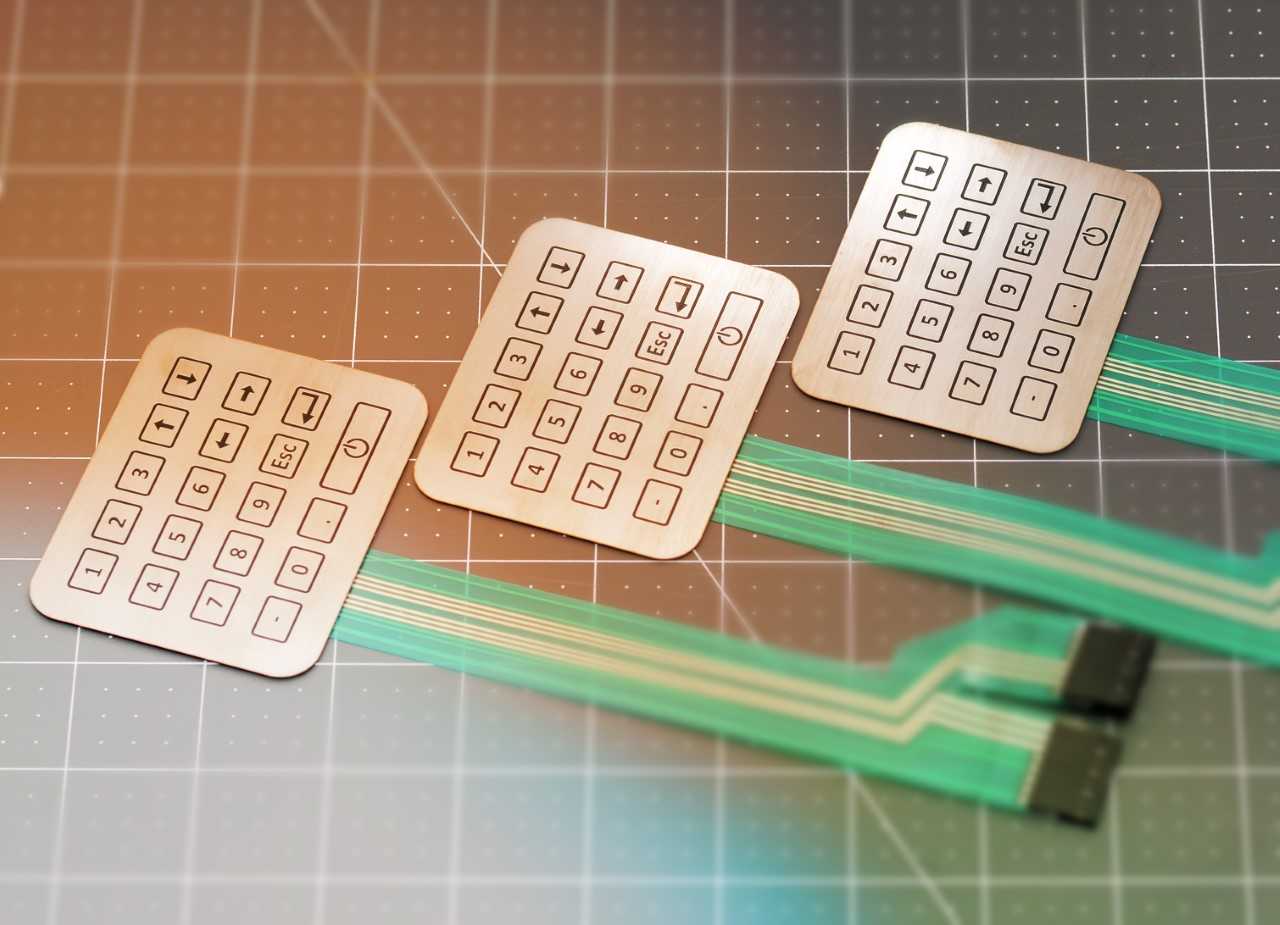Innovative Membrane Switch Solutions for Customized Control Panels
Innovative Membrane Switch Solutions for Customized Control Panels
Blog Article
Recognizing Membrane Layer Switches: The Key to Reputable and long lasting Controls

What Are Membrane Layer Switches?
Membrane layer buttons are an advanced solution in the realm of interface technology, combining capability and layout seamlessly. These tools act as a user interface in between individuals and electronic systems, incorporating several elements right into a small style. Commonly constructed from versatile, slim layers of materials, membrane buttons are developed to reply to touch, making it possible for users to engage with machinery and digital devices effectively.
The main components of a membrane layer button include a published circuit layer, graphic overlay, and a spacer layer that prevents unintended activation. The visuals overlay can be tailored to mirror brand name identification or individual preferences, boosting aesthetic appeals while making sure functionality. Membrane buttons are generally made use of in various applications, consisting of clinical tools, customer electronic devices, and commercial devices, owing to their durability and resistance to ecological aspects such as wetness and dust.
Among the crucial advantages of membrane switches is their ability to withstand damage, making them suitable for high-traffic environments. In addition, they are lightweight and call for marginal area, permitting innovative layouts in product growth. Generally, membrane switches over stand for a effective and practical selection for contemporary electronic user interfaces, marrying modern technology with user-centric design concepts.
How Membrane Layer Switches Job
The operation of membrane layer changes rest on an easy yet effective device that translates customer input into electronic signals. These buttons contain several layers, usually consisting of a graphic overlay, a spacer layer, and a circuit layer. When an individual presses the button, the top layer warps, allowing a conductive aspect in the circuit layer to reach a matching conductive pad on the bottom of the graphic overlay. This get in touch with shuts the circuit and sends out a digital signal to the gadget, showing that the switch has actually been turned on.
The design of membrane layer switches can vary, but they usually incorporate domes or tactile aspects to give responses to the user, enhancing the overall experience - membrane switch. The materials utilized in membrane layer switches, such as polyester or polycarbonate, add to their durability and resistance to environmental aspects, consisting of dampness and dirt. Furthermore, the printed circuits are generally encapsulated, which secures them from damage with time.
Advantages of Membrane Buttons

Additionally, membrane switches are understood for their longevity. Constructed from robust materials, they are resistant to dirt, wetness, and physical wear, which substantially expands their life-span contrasted to typical mechanical buttons. This resilience makes them especially appropriate for high-traffic atmospheres and applications needing durability.
Another considerable benefit is the convenience of cleansing and upkeep. The smooth surface area of membrane switches lessens dirt build-up and is usually resistant to spills, making them optimal for setups that call for regular sanitization.
Additionally, membrane switches supply a structured account, resulting in a thinner layout that can be incorporated into various devices without including bulk. This feature not just improves the aesthetic appeal yet likewise adds to an extra ergonomic product design.
Applications of Membrane Layer Buttons
Versatile and user-friendly, membrane layer buttons locate applications throughout a wide variety of markets, including clinical gadgets, consumer electronic devices, and industrial tools. In the medical area, these switches are indispensable to gadgets such as diagnostic devices, client surveillance systems, and mixture pumps, where dependability and ease of you could try this out cleansing are vital. Their capacity to stand up to harsh settings and preserve functionality makes them suitable for such applications.

In customer electronics, membrane buttons are used in products like microwaves, cleaning equipments, and push-button controls - membrane switch. Their sleek style permits intuitive individual interfaces, boosting the overall customer experience while giving longevity and resistance to use and tear
Industrial equipment likewise check out this site takes advantage of membrane layer buttons, particularly in control panels for machinery and automation systems. These switches use defense against dust and dampness, ensuring constant performance in difficult atmospheres. Their customizable features allow manufacturers to tailor them to particular functional demands, boosting effectiveness and performance.
Selecting the Right Membrane Change
When selecting a membrane switch, it is important to think about different elements that influence efficiency and suitability for particular applications. The primary considerations include ecological problems, tactile responses, longevity, and layout specs.
First, examine the operating atmosphere; switches revealed to dampness, chemicals, or extreme temperatures need particular materials to ensure longevity and performance. Next, evaluate the demand for responsive feedback. Depending upon customer communication, some applications may benefit from a responsive reaction to confirm activation, while others might like a non-tactile style for aesthetic factors.
Toughness is one more crucial variable; membrane switches must be developed to withstand constant use, influences, and abrasion. Guarantee the picked button can endure the anticipated lifecycle, particularly in high-usage circumstances.

Verdict
To conclude, membrane switches offer as vital components in the style of resilient and dependable control systems across numerous markets. Their compact style, combined with durable building and customizable functions, boosts individual communication while making sure durability sought after settings. The flexibility of membrane layer switches permits tailored options that meet particular functional needs, strengthening their importance in modern-day technology. As markets continue to advance, the value of incorporating effective membrane layer switch solutions can not be overstated.
Membrane layer switches represent a crucial element of modern interface layout, blending functionality with durability in numerous applications.Membrane buttons are an innovative solution in the world of individual interface technology, incorporating performance and layout flawlessly. Commonly constructed from versatile, thin layers of materials, membrane switches are developed to respond to touch, enabling customers to connect visit their website with equipment and electronic gadgets successfully.
The style of membrane switches can vary, but they commonly integrate domes or tactile aspects to supply comments to the individual, improving the general experience.In final thought, membrane switches serve as essential components in the design of dependable and durable control systems throughout different industries.
Report this page